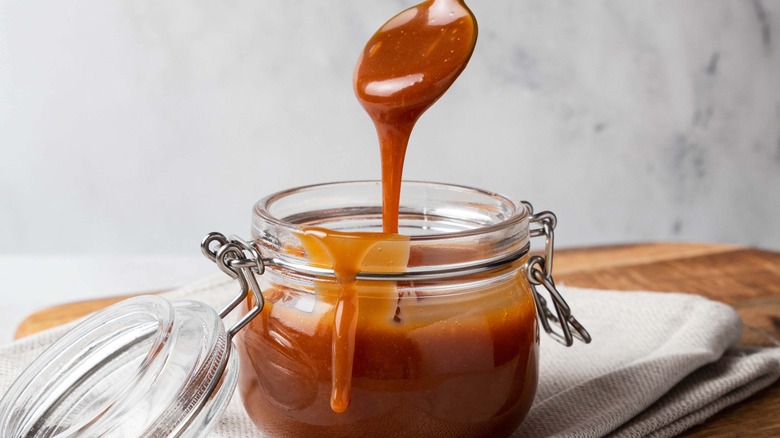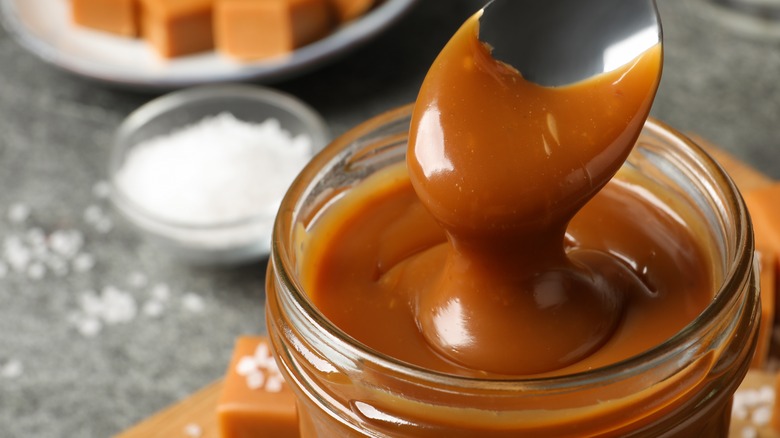For Perfect Caramel Sauce, Stop Adding Cold Cream
Working with sugar isn't for the faint of heart. It requires a myriad of ideal conditions to operate well, which can range from factors like how it's stored to the order in which ingredients are added. Sugar also changes form drastically depending on things like the temperature at which the sugar is cooked and how much air is incorporated, to the sugar itself (think of cotton candy vs. hard candy). However, for those who have mastered the science of working with it, the results are nothing short of magical. Sugar makes meringues, croquembouche, and everything in between. And for those who haven't mastered it, we are right there with you. When it comes to making caramel sauce, however, there's a trick so easy we hesitate to even call it a hack. It's just about keeping things at the correct temperature.
As America's Test Kitchen explains, caramel sauce looks simple in that it's just five ordinary household ingredients: butter, salt, cream, water, and of course, sugar.
Bring the heat
Where things can really can get sticky (pun intended) is with, you guessed it, the sugar component. Sugar easily gets burned or unpleasantly grainy in caramel sauce, when what you want is a silky mouthfeel and smooth, sweet taste. One of the best things to is warm the cream before adding it to your sauce. If you add cold cream straight from the fridge, the cream can often lower the temperature of the sugar in the pan. That quick lowering of the temperature in the midst of making the caramel sauce makes the sugar crystallize (hi there, grainy caramel sauce). Likewise, the cold cream added straight to the warm sugar can make sugar granules jump to the sides of the pan, where the sugar is likely to crystalize away from the moisture. Just gently warming the cream on the stove makes a big difference in keeping your sugar pliant and where it needs to be.
If you still need some help to push your caramel sauce into the upper eschaton of desserts, Chef Ken Oringer from America's Test Kitchen has your back.
Have caramel, will drizzle (and dip)
Chef Oringer at America's Test Kitchen suggests making a wet caramel, which involves adding some water to the sugar to protect it from burning as it cooks, instead of letting the sugar caramelize on its own. Other recommendations include not agitating the caramel as the sugar melts, to avoid the sugar splashing to the sides of the pot where they will crystalize, and adding both butter and salt for richness and that final salty hit that makes all caramel shine.
Now that you've got the ticket to the perfect caramel sauce, what to do with it? Sure it can go on ice cream, but it's also stellar on apple pie, a delicious dipping sauce for sliced fruit, pretzel rods, and cubed pound cake, and, truth be told, it's just about perfect on a spoon. Or a finger. You get the idea. And now that you have the tricks, you've also got the caramel sauce.


